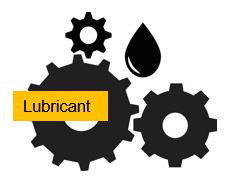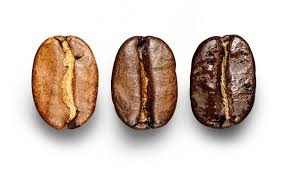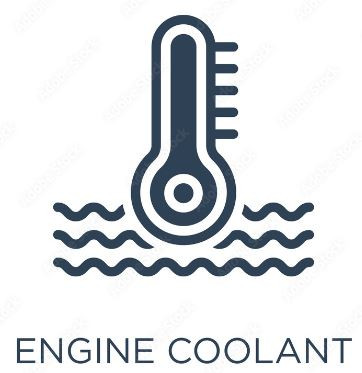The Importance of how Lubricant Products: Enhancing Equipment Performance and Maximizing ROI
Crude oil is extracted from underground reservoirs called oil fields. These oil fields are typically located beneath the Earth's surface, trapped within rock formations such as sandstone or limestone. The extraction process involves drilling wells into the oil fields and using various techniques to bring the crude oil to the surface.
The structure of oil reservoirs can vary, but they generally consist of different layers or formations. The primary layer where crude oil is found is called the reservoir rock. This rock layer has the ability to store and transmit oil due to its porous nature. Above the reservoir rock, there may be layers of impermeable rock or shale, which act as a barrier and prevent the upward movement of oil and gas.
Crude oil is a complex mixture of hydrocarbons, which are organic compounds composed of carbon and hydrogen atoms. It also contains small amounts of other elements such as sulfur, nitrogen, and oxygen, as well as trace amounts of metals. The composition of crude oil can vary depending on its source, and different grades or types of crude oil exist, each with its own specific characteristics.
Crude oil is further processed in refineries to separate it into various components, such as base oils, gasoline, diesel, jet fuel, and other petroleum products, through a process known as refining. These refined products are then used in various industries, including the production of lubricants, fuels, plastics, and chemicals.
The different components obtained from the refining process of crude oil, along with their characteristics and common uses:
|
Component |
Characteristic |
Common Uses |
|
Bottom Residue |
Heavy and viscous |
Asphalt, tar, heavy fuel oil Asphalt is a manmade material that is used to pave roads, bitumen is a by-product of crude oil that is used for its waterproofing and adhesive properties |
|
Vacuum Gas Oil |
Medium viscosity, high boiling point |
Diesel fuel, heating oil |
|
Light Gas Oil |
Medium viscosity, lower boiling point |
Diesel fuel, gasoline blending |
|
Naphtha |
Light liquid, volatile |
Gasoline blending, petrochemical feedstock |
|
Kerosene |
Low viscosity, moderate boiling point |
Jet fuel, heating oil, diesel fuel |
|
Gasoline |
Low viscosity, highly volatile |
Fuel for automobiles |
|
Liquefied Petroleum Gas (LPG) |
Gaseous at normal temperature and pressure |
Heating, cooking fuel |
|
Ethane |
Gaseous at normal temperature and pressure |
Petrochemical feedstock |
|
Propane |
Gaseous at normal temperature and pressure |
Liquefied gas for heating, cooking, and fuel |
|
Butane |
Gaseous at normal temperature and pressure |
Liquefied gas for heating, cooking, and fuel |
Please note that the characteristics and uses mentioned here are generalizations, and the specific properties and applications may vary depending on the refining process and the intended use of the components.
Additives and lubricants are typically derived from the base oil fraction obtained during the refining process of crude oil. Base oils are the main component of lubricants, and they provide the necessary lubrication and protection to surfaces in various applications. Additives are then mixed with the base oil to enhance its performance and provide specific properties.
The specific layer of base oil used for additives and lubricants can vary depending on the desired viscosity and quality of the final product. Generally, base oils obtained from the middle distillate fraction, which includes vacuum gas oil and light gas oil, are commonly used for lubricant production. These fractions have suitable viscosity ranges and thermal stability, making them ideal for formulating lubricants.
It's important to note that there are different base oil categories, such as Group I, Group II, Group III, and synthetic base oils (Group IV and V), each with varying levels of refining and performance characteristics. The selection of the base oil layer and the addition of specific additives depend on the desired application and performance requirements of the lubricant.
Basic Base Oil:
Base oil is a key component in lubricants and plays a crucial role in reducing friction, heat, and wear in machinery and engines. It serves as a foundation for formulating various types of lubricants. Base oils are derived from crude oil through a refining process. They are categorized into different groups based on their composition and properties, such as viscosity, oxidation stability, and additive solubility. Common base oil groups include Group I, Group II, Group III, Group IV (synthetic), and Group V (specialty).
Additives:
Additives are substances added to lubricants to enhance their performance and provide specific benefits. They are blended with base oils to improve lubricant properties such as viscosity index, oxidation resistance, corrosion protection, and detergency. Additives can include anti-wear agents, friction modifiers, antioxidants, detergents, dispersants, and viscosity modifiers. Each additive has a specific function and is selected based on the desired performance characteristics of the lubricant.
Types of Lubricants:
Lubricants come in various forms to meet different application requirements. Some common types of lubricants include engine oils, hydraulic fluids, gear oils, transmission fluids, greases, and industrial oils. Engine oils are specifically formulated for internal combustion engines, while hydraulic fluids are used in hydraulic systems for power transmission. Gear oils provide lubrication and protection to gear systems, while transmission fluids are designed for automatic and manual transmissions. Greases have a semi-solid consistency and are used in applications where adhesive properties and longer-lasting lubrication are needed. Industrial oils are used in various industrial machinery and equipment.
Lubricants are produced through a manufacturing process that involves blending base oils and additives. The base oils can be derived from various sources, including crude oil refining or synthesis. The type of base oil used will determine the overall quality and performance characteristics of the lubricant.
There are different types of lubricants available, including synthetic, semi-synthetic, organic, and hydrocracked lubricants:
- Mineral Oil Lubricants: These lubricants are derived from crude oil through a refining process. They are cost-effective and widely used in various applications. Mineral oil lubricants provide good lubrication and protection but may have limitations in extreme operating conditions.
- Specialty Lubricants: Apart from the main categories mentioned above, there are specialty lubricants designed for specific applications. For example, there are lubricants formulated for high-temperature environments, extreme pressure conditions, electric motors, gears, and many other specialized applications.
- Synthetic Lubricants: These lubricants are chemically synthesized and offer superior performance and stability compared to conventional mineral-based oils. They have excellent thermal and oxidative stability, high viscosity index, and enhanced lubricating properties. Synthetic lubricants are commonly used in demanding applications where extreme temperature, pressure, or operating conditions are present.
- Semi-Synthetic Lubricants: These lubricants are a blend of synthetic and mineral base oils. They offer a balance between performance and cost-effectiveness. Semi-synthetic lubricants provide improved protection and performance compared to mineral-based oils but are not as advanced as fully synthetic lubricants.
- Organic Lubricants: Organic lubricants are derived from vegetable oils or other bio-based sources. They are considered environmentally friendly and are used in applications where there is a need for biodegradability and low environmental impact. Organic lubricants find applications in sectors such as food processing, agriculture, and environmentally sensitive areas.
- Hydrocracked Lubricants: Hydrocracking is a refining process that produces high-quality base oils with improved performance characteristics compared to conventional mineral oils. Hydrocracked lubricants have enhanced stability, better resistance to oxidation, and improved viscosity index.
- Grease: Grease is a semi-solid lubricant that consists of a base oil thickened with a soap or other thickening agent. It has a higher viscosity compared to liquid lubricants and provides long-lasting lubrication and protection, especially in applications where continuous lubrication is required, such as bearings and chassis components.
- Brake Oil (Brake Fluid): Brake oil, also known as brake fluid, is a hydraulic fluid specially designed for use in hydraulic brake systems. It is responsible for transmitting the force from the brake pedal to the brake components, allowing effective braking. Brake oil must have high boiling points, low compressibility, and resistance to moisture absorption to ensure reliable brake performance and prevent brake fade.
- Coolant: Coolant, also referred to as antifreeze, is a fluid used to regulate engine temperature in vehicles and machinery. It helps dissipate heat generated during combustion and protects the engine against freezing in cold temperatures and boiling in high temperatures. Coolant also contains additives to prevent corrosion, scale build-up, and cavitation in the cooling system.
The main function of a lubricant is to reduce friction between two surfaces in motion, typically solid surfaces in contact with each other. It helps to minimize wear and tear, heat generation, and energy losses that occur due to friction. Lubricants create a thin, protective film between the surfaces, allowing them to slide or roll smoothly against each other. This film separates the surfaces, preventing direct metal-to-metal contact and minimizing frictional forces.
In addition to reducing friction, lubricants also provide other important functions, such as:
- Minimizing wear and extending the lifespan of mechanical components: By reducing friction and the resulting wear, lubricants help to preserve the integrity and performance of moving parts, such as engines, gears, bearings, and sliding mechanisms.
- Cooling: Lubricants can dissipate heat generated by friction, reducing the risk of overheating and potential damage to the components. They act as a heat transfer medium, carrying away excess heat from the contact surfaces.
- Corrosion protection: Lubricants can contain additives that help prevent corrosion by forming a protective barrier on the surfaces. This barrier inhibits the contact of metal surfaces with moisture or corrosive substances.
- Contaminant removal: Lubricants can also carry away and suspend contaminants, such as dirt, dust, and metal particles, preventing them from causing damage or interfering with the proper functioning of the equipment.
Lubricants can be used in various industries and applications, including:
- Automobile: Lubricants are essential for automotive engines, gearboxes, and other moving components.
- Industrial: Lubricants are used in industrial machinery, such as manufacturing equipment, pumps, compressors, and hydraulic systems.
- Aviation: Lubricants are crucial for aircraft engines, landing gear systems, and other aircraft components.
- Marine: Lubricants are used in marine engines, propulsion systems, and other marine equipment.
- Motorcycle: Lubricants are specifically formulated for motorcycle engines, transmissions, and chains.
- Food: Lubricants used in the food industry are designed to meet strict safety and regulatory requirements for incidental food contact.
- Bio: Bio-based lubricants are used in environmentally sensitive areas and applications where biodegradability and low toxicity are important considerations.
The selection of the lubricant type depends on the specific requirements of the application, including operating conditions, equipment design, and regulatory considerations.
Lubricants used in different applications and industries can vary in their grades and specifications. Here are some commonly used lubricant grades for specific applications:
- Automobiles: The Society of Automotive Engineers (SAE) has established a viscosity grading system for automotive lubricants, commonly known as SAE viscosity grades. For engine oils, you may encounter grades such as SAE 5W-30, SAE 10W-40, or SAE 20W-50, where the numbers before the "W" represent the oil's viscosity at low temperatures, and the numbers after the "W" represent the viscosity at high temperatures.2. Motorcycles: Motorcycle lubricants often have specific formulations tailored to meet the demands of motorcycle engines and transmissions. They may be available in various viscosity grades similar to automotive oils, but there can also be specialized motorcycle-specific formulations for high-performance engines or specific applications like racing.
- Diesel Trucks: Diesel engine oils for trucks typically come in various viscosity grades, such as SAE 15W-40, SAE 10W-30, or SAE 5W-40, depending on the specific engine requirements and operating conditions. These oils often have additives to handle the higher temperatures, pressures, and soot accumulation associated with diesel engines.
- Marine: Marine lubricants are designed to withstand the harsh conditions of marine environments, including exposure to water, high loads, and extended service intervals. They may have specific grades and certifications like NMMA (National Marine Manufacturers Association) TC-W3 for two-stroke outboard motor oils or API (American Petroleum Institute) CF for four-stroke marine engine oils.
- Aviation: Lubricants used in aviation applications must meet stringent requirements and certifications due to the critical nature of aircraft systems. Different grades and specifications are available for various aircraft components, such as turbine engine oils (e.g., MIL-PRF-23699 or SAE AS5780), hydraulic fluids (e.g., MIL-PRF-83282 or Skydrol), and greases.
- Industrial: Industrial lubricants encompass a wide range of applications, including machinery, equipment, and manufacturing processes. These lubricants may have specific grades and specifications based on factors like operating temperatures, load capacities, and environmental conditions. ISO viscosity grades, such as ISO VG 32, ISO VG 68, or ISO VG 150, are commonly used to classify industrial lubricants based on their kinematic viscosities.
- Food: Lubricants used in food processing and handling equipment must comply with strict food-grade regulations to ensure safety and prevent contamination. They are formulated with non-toxic ingredients and should meet specific standards like NSF H1 (for incidental food contact) or NSF 3H (for direct food contact).
- Electrical components: Lubricants used for electrical components, such as switches, connectors, and contacts, are designed to enhance conductivity, prevent oxidation, and protect against corrosion. They are often non-conductive and may have specialized formulations to meet the requirements of electrical systems.
- Grease - Grease is a type of lubricant that consists of a base oil thickened with a soap or non-soap thickener. It has a semi-solid or solid consistency and is typically used in applications where oil would not be suitable or convenient. The thickener in grease helps retain the lubricating oil within the structure, providing a semi-fluid or solid lubricating film.Grease is commonly used in various applications, including:
- Automotive: Grease is used in automotive applications such as wheel bearings, chassis components, universal joints, and CV joints. The specific grade and type of grease depend on the load, temperature, and operating conditions of the component.
- Industrial Machinery: Grease is widely used in industrial machinery for lubricating bearings, gears, chains, slides, and other moving parts. The choice of grease grade and type depends on factors such as load, speed, temperature, and environmental conditions.
- Construction and Mining Equipment: Heavy-duty equipment used in construction and mining industries often require specialized greases to withstand extreme loads, shock loads, and harsh operating conditions. Grease is used for components such as excavator pins, bushings, and open gears.
- Marine: Grease is utilized in marine applications for lubricating components such as propeller shafts, stern tubes, winches, and steering systems. Marine-grade greases are formulated to withstand water exposure, corrosion, and high loads.
- Electrical Applications: Grease can be used in electrical applications to lubricate contacts, switches, and connectors. It helps prevent oxidation, improves conductivity, and protects against corrosion.
- Food Processing: Food-grade greases are used in the food and beverage industry to lubricate equipment such as mixers, conveyors, bearings, and chains. These greases are formulated with non-toxic ingredients and comply with food-grade regulations to ensure safety.
- Aerospace: Greases play a crucial role in aerospace applications for lubricating critical components such as landing gear, bearings, and actuators. Aerospace-grade greases must meet stringent requirements for performance, temperature range, and compatibility with other materials.
Grease is available in various grades, often referred to as NLGI (National Lubricating Grease Institute) grades. The NLGI grading system classifies greases based on their consistency, ranging from NLGI 000 (semi-fluid) to NLGI 6 (very hard). The choice of NLGI grade depends on the application and the desired characteristics of the grease, such as the ability to stay in place under high loads or resist softening at high temperatures.
Type of lubricant viscosity Grade:
|
Viscosity Grade |
Viscosity Characteristics |
Common Applications |
Example |
|
0W-10 |
Very low viscosity at low temperatures, excellent cold start performance |
High-performance gasoline engines, especially in cold climates |
Shell Helix Ultra 0W-10 |
|
0W-20 |
Low viscosity at low temperatures, good fuel economy |
Modern gasoline engines, including passenger cars and light trucks |
Mobil 1 0W-20 |
|
0W-30 |
Low viscosity at low temperatures, versatile performance |
Most gasoline engines, including passenger cars, light trucks, and SUVs |
Castrol Edge 0W-30 |
|
0W-40 |
Low viscosity at low temperatures, enhanced high-temperature protection |
High-performance engines, including turbocharged and supercharged engines |
Valvoline SynPower 0W-40 |
|
5W-20 |
Low viscosity at low temperatures, good fuel economy |
Modern gasoline engines, including passenger cars and light trucks |
Pennzoil Platinum 5W-20 |
|
5W-30 |
Low viscosity at low temperatures, versatile performance |
Most gasoline engines, including passenger cars, light trucks, and SUVs |
Mobil 1 5W-30 |
|
5W-40 |
Low viscosity at low temperatures, enhanced high-temperature protection |
Modern gasoline and diesel engines, including turbocharged engines |
Castrol Edge 5W-40 |
|
5W-50 |
Low viscosity at low temperatures, high-temperature protection |
High-performance engines, racing applications |
Motul 300V 5W-50 |
|
10W-30 |
Good low-temperature flow, balanced performance |
Older gasoline engines and some diesel engines |
Shell Rotella T4 10W-30 |
|
10W-40 |
Good low-temperature flow, increased viscosity at high temperatures |
Older gasoline and diesel engines, including some high-performance engines |
Valvoline High Mileage 10W-40 |
|
15W-40 |
Good low-temperature flow, higher viscosity at high temperatures |
Diesel engines in trucks, heavy-duty vehicles, and off-road equipment |
Delo 400 XSP 15W-40 |
|
20W-40 |
Higher viscosity at both low and high temperatures, enhanced high-temperature protection |
Older or high-mileage gasoline and diesel engines |
Motul 6100 Synergie+ 20W-40 |
|
20W-50 |
Higher viscosity at both low and high temperatures, excellent high-temperature protection |
Older or high-mileage gasoline and diesel engines, especially in hot climates |
Castrol GTX 20W-50 |
|
20W-60 |
High viscosity at both low and high temperatures, maximum protection |
High-performance engines, racing applications, extreme conditions |
Royal Purple HPS 20W-60 |
|
25W-60 |
High viscosity at both low and high temperatures, maximum protection |
High-performance engines, racing applications, extreme conditions |
Red Line High-Performance 25W-60 |
|
70W |
High viscosity at both low and high temperatures |
Manual transmissions, differentials, and heavy-duty gearboxes |
Valvoline High Performance 70W |
|
80W |
High viscosity at both low and high temperatures |
Manual transmissions, differentials, and heavy-duty gearboxes |
Lucas Oil Heavy Duty 80W |
|
80W-90 |
Good low-temperature flow, higher viscosity at high temperatures |
Manual transmissions, differentials, and gearboxes |
Mobil 1 Synthetic 80W-90 |
|
90 |
Moderate viscosity, suitable for a wide range of gear applications |
Automotive manual transmissions, industrial gearboxes |
Pennzoil Synchromesh Manual Transmission Fluid 90 |
|
140 |
High viscosity, for heavy-duty and high-load gear applications |
Industrial gearboxes, heavy-duty equipment |
Shell Omala S4 GXV 140 |
|
250 |
Very high viscosity, for extreme heavy-duty and high-load gear applications |
Industrial gearboxes, heavy-duty equipment |
Chevron RPM Heavy Duty Gear Oil 250 |
|
320 |
Very high viscosity, for extreme heavy-duty and high-load gear applications |
Industrial gearboxes, heavy-duty equipment |
Castrol Alpha SP 320 |
|
460 |
Very high viscosity, for extreme heavy-duty and high-load gear applications |
Industrial gearboxes, heavy-duty equipment |
ExxonMobil Mobilgear 600 XP 460 |
|
680 |
Very high viscosity, for extreme heavy-duty and high-load gear applications |
Industrial gearboxes, heavy-duty equipment |
Shell Omala S2 G 680 |
|
GL-1 |
Low EP (Extreme Pressure) protection, primarily used in vintage manual transmissions and gearboxes |
Vintage manual transmissions and gearboxes |
Red Line MT-90 GL-1 |
|
GL-2 |
Mild EP protection, limited use due to advancements in gear oil technology |
Older manual transmissions, industrial gearboxes |
Valvoline VR1 GL-2 Gear Oil |
|
GL-3 |
Moderate EP protection, used in synchronized manual transmissions |
Synchronized manual transmissions |
Motul Gear 300 75W-90 GL-3 |
|
Steering Grade |
Specific formulation for power steering systems, provides lubrication and protection |
Power steering systems in vehicles |
Pentosin CHF 11S Power Steering Fluid |
|
Brake Fluid |
Not classified by viscosity grade, formulated to meet specific brake system requirements |
Hydraulic brake systems in vehicles |
Castrol React SRF Racing Brake Fluid |
Welcome to the course on lubricants. In this course, you'll learn about the definition, types, production processes, applications, API classifications, and environmental impact of lubricants. Let's dive in!"
Module 1: Definition of Lubricant
- "A lubricant is a substance applied between two surfaces in relative motion to reduce friction, wear, and overheating."
- "Lubricants help protect and prolong the life of machinery and mechanical parts."
- Question: "Can you name two benefits of using lubricants in machinery?"
Module 2: Types of Lubricants
2.1 Mineral Lubricants
- "Mineral lubricants are derived from refining crude oil."
- "They contain varying levels of natural impurities and additives."
- "Applications include automotive and industrial sectors."
- Question: "What is the primary source of mineral lubricants?"
2.2 Synthetic Lubricants
- "Synthetic lubricants are chemically engineered for superior performance."
- "They offer greater stability, lower volatility, and improved performance at extreme temperatures."
- "Commonly used in high-performance engines, aviation, and industrial machinery."
- Question: "Name one characteristic that makes synthetic lubricants suitable for high-performance engines."
2.3 Semi-Synthetic Lubricants
- "Semi-synthetic lubricants are a blend of mineral and synthetic oils."
- "They combine the benefits of both types for improved performance and cost-effectiveness."
- "Widely used in automotive and industrial sectors."
- Question: "What is the main advantage of semi-synthetic lubricants?"
2.4 Specialty Lubricants
- Penetrating Lubricants: "Used for freeing rusty or debris-covered parts."
- Dry Lubricants: "Available in solid or spray form, used where liquid lubricants are unsuitable."
- Question: "Can you give an example of when you might use a dry lubricant?"
Module 3: Production Process
3.1 Extraction
- "Raw material, crude oil, is extracted from the earth."
3.2 Refining
- "Crude oil is refined to remove impurities and separate it into different fractions."
3.3 Blending
- "Additives are mixed with the base oil to enhance properties like anti-wear, anti-oxidation, and viscosity."
3.4 Testing
- "Lubricants are tested to ensure they meet industry standards and performance specifications."
- Question: "Why is the refining process essential in lubricant production?"
Module 4: Applications of Lubricants
4.1 Automotive
- Engine Oil: "Reduces friction and wear in engines."
- Transmission Fluid: "Ensures smooth gear shifts."
- Grease: "Used for wheel bearings and chassis lubrication."
- Question: "Which lubricant is essential for smooth gear shifts?"
4.2 Industrial Machinery
- Gear Oils: "Protect gears from wear and overheating."
- Hydraulic Fluids: "Transfer power in hydraulic systems."
- Greases: "Lubricate bearings and moving parts."
- Question: "Name two types of lubricants used in industrial machinery."
4.3 Aviation
- Turbine Oils: "Lubricate jet engines."
- Hydraulic Fluids: "Operate flight control systems."
- Question: "What is the primary use of turbine oils in aviation?"
4.4 Marine
- Engine Oils: "Protect ship engines."
- Gear Oils: "Lubricate propeller systems."
- Question: "What lubricant is used for ship propeller systems?"
4.5 Others
- Motorcycles: "Engine and chain lubricants."
- Trains: "Engine oils and greases for locomotives."
- Question: "What type of lubricant would you use for motorcycle chains?"
Module 5: API Classifications
5.1 Gasoline Engine Oil
- API Grade: "The American Petroleum Institute classifies engine oils based on performance."
- "Grades range from SA (1930s) to SN (2010)."
- Question: "What does the API classification signify in engine oils?"
5.2 Diesel Engine Oil
- API Grade: "Classifications range from CA (1940s) to CJ-4 (2006)."
- Question: "Why is it important to follow API classifications when selecting engine oil?"
Module 6: Environmental Impact and Disposal
- "Proper disposal and recycling of lubricants are essential to prevent environmental contamination."
- "Follow local regulations for disposing of used lubricants to minimize environmental impact."
- Question: "Why is it crucial to follow local regulations for lubricant disposal?"
Conclusion
"Thank you for completing the course on lubricants. Ensure you review the key concepts and feel free to revisit any module if needed. Your knowledge of lubricants is essential for maintaining and optimizing the performance of various machinery and equipment."
Final Quiz
- "What is the primary function of a lubricant?"
- "Name two types of synthetic lubricants and their applications."
- "Explain the significance of the refining process in lubricant production."
- "List three applications of lubricants in the automotive industry."
- "Describe the importance of API classifications for engine oils."
- "What steps should be taken for the proper disposal of lubricants?"













No Comments